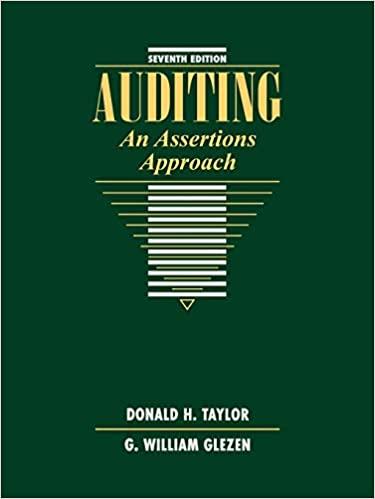



The Regal Cycle Company manufactures three types of bicycles-a dirt bike, a mountain bike, and a racing bike. Data on sales and expenses for the past quarter follow: Dirt Mountain Racing Total Bikes Bikes Bikes $ 931,000 $266,000 $ 408,000 $ 257,000 463,000 118,000 193,000 152,000 468,000 148,000 215,000 105,000 Sales Variable manufacturing and selling expenses Contribution margin Fixed expenses: Advertising, traceable Depreciation of special equipment Salaries of product-line managers Allocated common fixed expenses* Total fixed expenses Net operating income (loss) 68,600 8,200 40,300 20,100 43,900 21,000 7,200 15,700 115,500 40,800 38,200 36,500 186,200 53,200 81,600 51,400 414,200 123,200 167,300 123,700 $ 53,800 $ 24,800 $ 47,700 $(18,700) *Allocated on the basis of sales dollars. Management is concerned about the continued losses shown by the racing bikes and wants a recommendation as to whether or not the line should be discontinued. The special equipment used to produce racing bikes has no resale value and does not wear out. Required: 1. What is the financial advantage (disadvantage) per quarter of discontinuing the racing bikes? 2. Should the production and sale of racing bikes be discontinued? 3. Prepare a properly formatted segmented income statement that would be more useful to management in assessing the long-run profitability of the various product lines. Troy Engines, Ltd., manufactures a variety of engines for use in heavy equipment. The company has always produced all of the necessary parts for its engines, including all of the carburetors. An outside supplier has offered to sell one type of carburetor to Troy Engines, Ltd., for a cost of $36 per unit. To evaluate this offer, Troy Engines, Ltd., has gathered the following information relating to its own cost of producing the carburetor internally: Direct materials Direct labor Variable manufacturing overhead Fixed manufacturing overhead, traceable Fixed manufacturing overhead, allocated Total cost 20,000 Units Per per Unit $ 13 $ 260,000 11 220,000 4 80,000 6* 120,000 9 180,000 $ 43 $ 860,000 *One-third supervisory salaries; two-thirds depreciation of special equipment (no resale value). Required: 1. Assuming the company has no alternative use for the facilities that are now being used to produce the carburetors, what would be the financial advantage (disadvantage) of buying 20,000 carburetors from the outside supplier? 2. Should the outside supplier's offer be accepted? 3. Suppose that if the carburetors were purchased, Troy Engines, Ltd., could use the freed capacity to launch a new product. The segment margin of the new product would be $200,000 per year. Given this new assumption, what would be the financial advantage (disadvantage) of buying 20,000 carburetors from the outside supplier? 4. Given the new assumption in requirement 3, should the outside supplier's offer be accepted? Andretti Company has a single product called a Dak. The company normally produces and sells 89,000 Daks each year at a selling price of $62 per unit. The company's unit costs at this level of activity are given below: Direct materials Direct labor Variable manufacturing overhead Fixed manufacturing overhead Variable selling expenses Fixed selling expenses Total cost per unit $ 9.50 9.00 2.60 5.00 ($445,000 total) 2.70 3.50 ($311,500 total) $32.30 A number of questions relating to the production and sale of Daks follow. Each question is independent. Required: 1-a. Assume that Andretti Company has sufficient capacity to produce 111,250 Daks each year without any increase in fixed manufacturing overhead costs. The company could increase its unit sales by 25% above the present 89,000 units each year if it were willing to increase the fixed selling expenses by $120,000. What is the financial advantage (disadvantage) of investing an additional $120,000 in fixed selling expenses? 1-b. Would the additional investment be justified? 2. Assume again that Andretti Company has sufficient capacity to produce 111,250 Daks each year. A customer in a foreign market wants to purchase 22,250 Daks. If Andretti accepts this order it would have to pay import duties on the Daks of $2.70 per unit and an additional $13,350 for permits and licenses. The only selling costs that would be associated with the order would be $1.90 per unit shipping cost. What is the break-even price per unit on this order? 3. The company has 800 Daks on hand that have some irregularities and are therefore considered to be "seconds." Due to the irregularities, it will be impossible to sell these units at the normal price through regular distribution channels. What is the unit cost figure that is relevant for setting a minimum selling price? 4. Due to a strike in its supplier's plant, Andretti Company is unable to purchase more material for the production of Daks. The strike is expected to last for two months. Andretti Company has enough material on hand to operate at 25% of normal levels for the two-month period. As an alternative, Andretti could close its plant down entirely for the two months. If the plant were closed, fixed manufacturing overhead costs would continue at 35% of their normal level during the two-month period and the fixed selling expenses would be reduced by 20% during the two-month period. a. How much total contribution margin will Andretti forgo if it closes the plant for two months? b. How much total fixed cost will the company avoid if it closes the plant for two months? c. What is the financial advantage (disadvantage) of closing the plant for the two-month period? d. Should Andretti close the plant for two months? 5. An outside manufacturer has offered to produce 89,000 Daks and ship them directly to Andretti's customers. If Andretti Company accepts this offer, the facilities that it uses to produce Daks would be idle; however, fixed manufacturing overhead costs would be reduced by 30%. Because the outside manufacturer would pay for all shipping costs, the variable selling expenses would be only two- thirds of their present amount. What is Andretti's avoidable cost per unit that it should compare to the price quoted by the outside manufacturer










